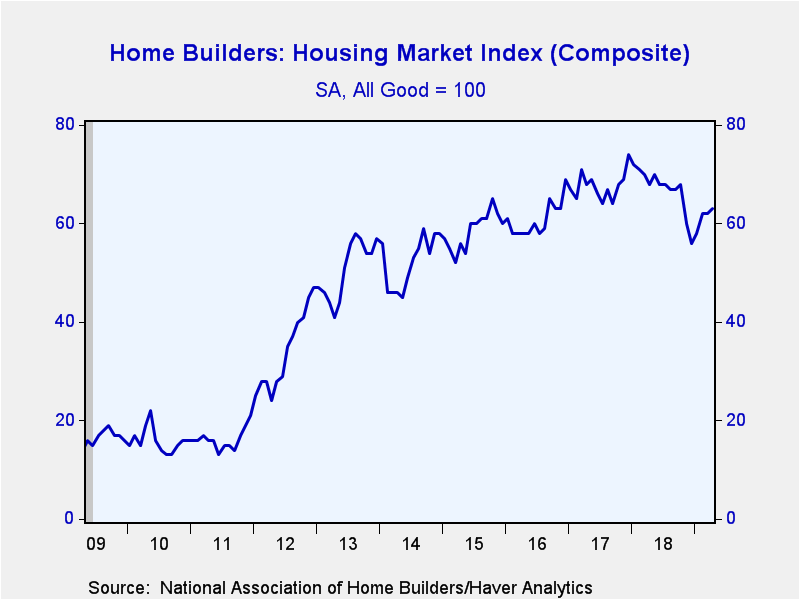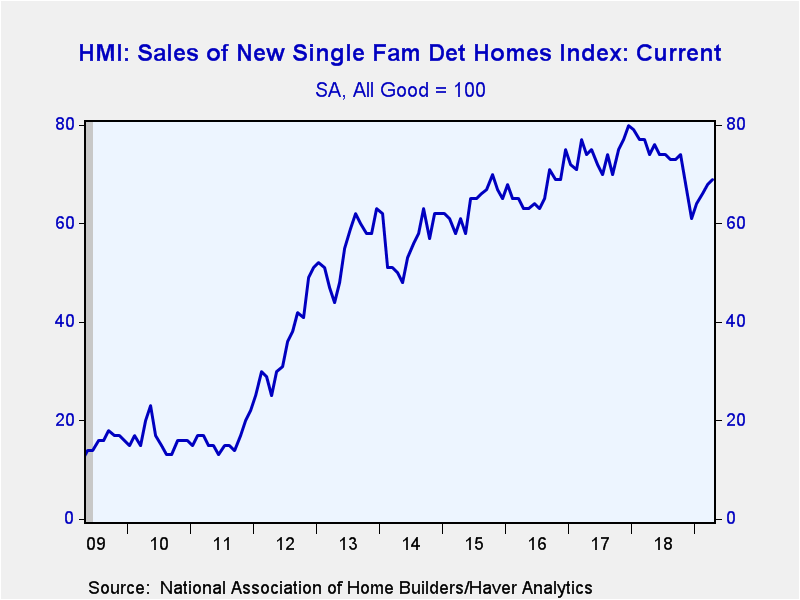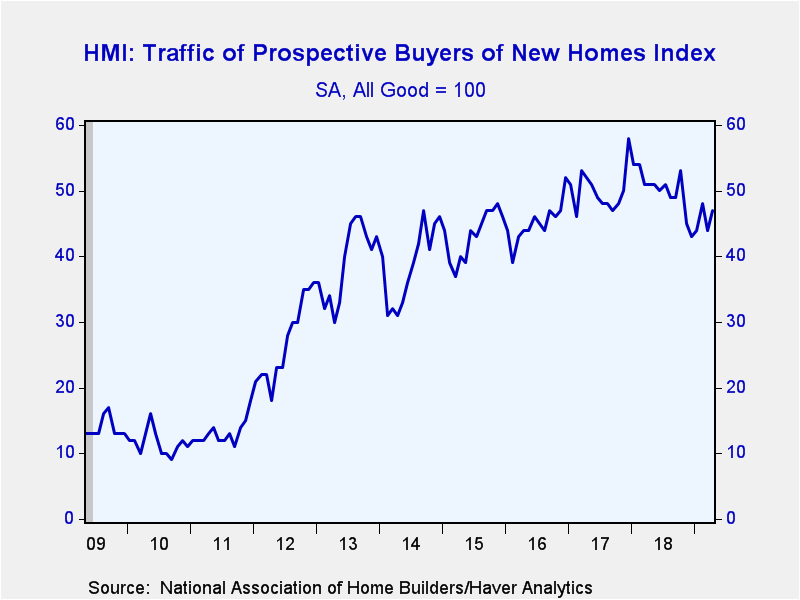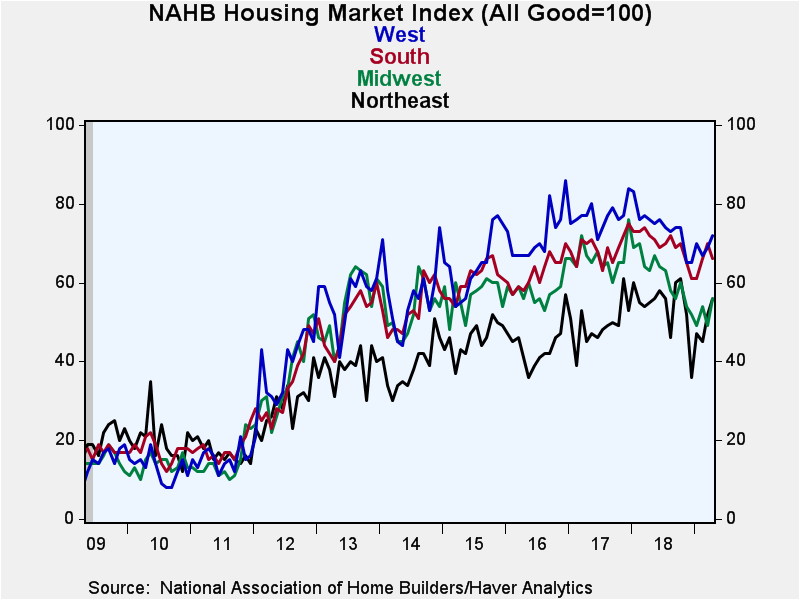 Global| Apr 16 2019
Global| Apr 16 2019U.S. Home Builder Sentiment Increases
by:Tom Moeller
|in:Economy in Brief
Summary
The Composite Housing Market Index from the National Association of Home Builders-Wells Fargo rose to 63 during April after improved readings of 62 in the prior two months. The index remained up from the December low of 56, but below [...]
The Composite Housing Market Index from the National Association of Home Builders-Wells Fargo rose to 63 during April after improved readings of 62 in the prior two months. The index remained up from the December low of 56, but below the expansion high of 74 reached in December of 2017. The increase was as expected in the Informa Global Markets Survey. The NAHB figures are seasonally adjusted. During the last ten years, there has been a 57% correlation between the y/y change in the home builders index and the y/y change in new plus existing home sales.
The performance of the three index components was mixed this month. The index of present sales conditions rose to 69, its highest level since October. The level of the index remained down, however, from its peak of 80 in December 2017. The index of expected conditions in the next six months slipped to 71. The recent peak in this index was 80 in February of last year.
The index measuring traffic of prospective buyers rose to 47 but remained below the peak of 58 reached in December 2017.
The rise in the overall April index reflected mixed performance amongst regions of the country. For the Northeast, the reading rose sharply m/m to 56, up from its low of 36 in December. The index for the West improved to 72, its highest level in six months. The reading for the Midwest rebounded to 56, also its highest level in six months. Easing to 66 was the reading for the South, reversing its March rise.
The NAHB has compiled the Housing Market Index since 1985. It reflects survey questions asking builders to rate market conditions as "good," "fair," "poor" or "very high" to "very low." The figure is thus a diffusion index with numerical results six over 50 indicating a predominance of "good" readings. The weights assigned to the individual index components are 0.5920 for single-family detached sales, present time, 0.1358 for single-family detached sales, next months and 0.2722 for traffic of prospective buyers. The results are included in Haver's SURVEYS database. The expectations figure is available in Haver's MMSAMER database.
| National Association of Home Builders | Apr | Mar | Feb | Apr'18 | 2018 | 2017 | 2016 |
|---|---|---|---|---|---|---|---|
| Composite Housing Market Index, SA (All Good=100) | 63 | 62 | 62 | 68 | 67 | 68 | 61 |
| Single-Family Sales: Present | 69 | 68 | 66 | 74 | 73 | 74 | 67 |
| Single-Family Sales: Next Six Months | 71 | 72 | 68 | 77 | 74 | 76 | 67 |
| Traffic of Prospective Buyers | 47 | 44 | 48 | 51 | 50 | 50 | 45 |
Tom Moeller
AuthorMore in Author Profile »Prior to joining Haver Analytics in 2000, Mr. Moeller worked as the Economist at Chancellor Capital Management from 1985 to 1999. There, he developed comprehensive economic forecasts and interpreted economic data for equity and fixed income portfolio managers. Also at Chancellor, Mr. Moeller worked as an equity analyst and was responsible for researching and rating companies in the economically sensitive automobile and housing industries for investment in Chancellor’s equity portfolio. Prior to joining Chancellor, Mr. Moeller was an Economist at Citibank from 1979 to 1984. He also analyzed pricing behavior in the metals industry for the Council on Wage and Price Stability in Washington, D.C. In 1999, Mr. Moeller received the award for most accurate forecast from the Forecasters' Club of New York. From 1990 to 1992 he was President of the New York Association for Business Economists. Mr. Moeller earned an M.B.A. in Finance from Fordham University, where he graduated in 1987. He holds a Bachelor of Arts in Economics from George Washington University.










